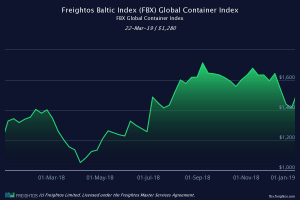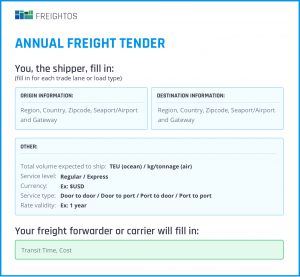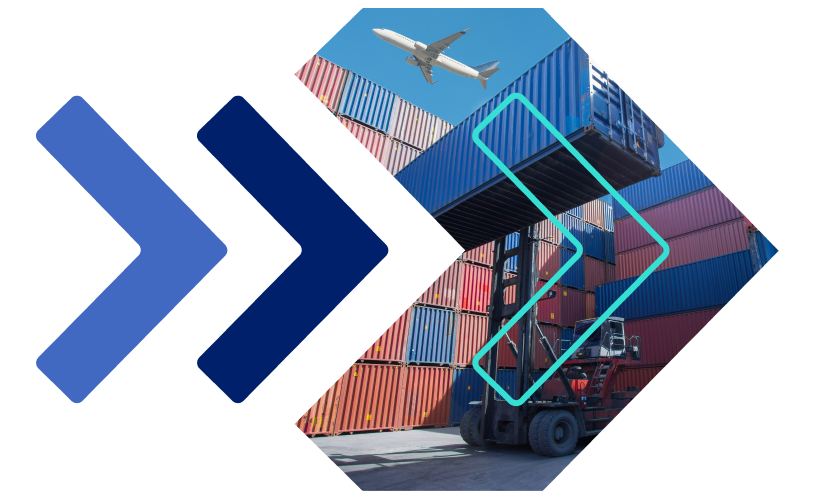by Daniel Bataller, VP Operations, WebCargo
Navigating annual freight contracts, often referred to as tenders in the logistics industry, can prove to be a complex and challenging task. These contracts involve long-term commitments and can entail a multitude of variables and considerations. However, if your business engages in shipping substantial volumes of goods on a regular basis, entering into annual freight contracts can offer several advantages and benefits tailored to your specific needs.
To help you make informed decisions in this intricate realm of logistics, we’ve consulted with industry experts to craft this comprehensive guide. Our aim is to equip you with the knowledge and insights necessary to not only grasp the fundamental concepts and intricacies of freight contracts but also leverage strategies like seasonality to your advantage.
Annual freight contracts hold particular appeal for businesses dealing with consistent shipping requirements. These contracts typically establish a binding agreement between shippers and carriers for an extended period, often a year. By locking in rates and capacity for an extended duration, shippers can gain cost predictability and operational stability. However, managing these contracts effectively requires a deep understanding of industry jargon, negotiation skills, and the ability to adapt to changing market conditions.
Our guide covers everything you need to know, from the basics of contract terminology to advanced techniques like utilizing seasonal variations in shipping demand to optimize your contract’s terms and maximize your supply chain efficiency.
What is freight tendering?
Each year, as part of their freight rate procurement process, importers and exporters negotiate freight rates and services with carriers or freight forwarders. This is known as an annual freight tender, and it’s worth considering using them if you ship more than 1000 TEUs a year.
Annual freight contracts can be complicated for a few reasons. First, tight deadlines make it difficult to ensure that all costs are included in the tender. Prices tend to change over the seasons, and it is not rare for a carrier to struggle to service at the tendered price, or for a large importer to renegotiate if prices drop. For example, when prices suddenly spike near peak season, it may take additional fees to ensure that goods make it on the right vessel, rendering contracts moot. Second, multiple volumes across various port pairs, each with its own surcharges, transit, and routings can add all sorts of twists and turns.
As companies scale in volume and footprint, this becomes more challenging. A top-tier forwarder could have hundreds of employees whose full-time job is negotiating shipping contracts. It’s a big deal. But with a little preparation, you can face these challenges with confidence.
When to negotiate your freight contract
Tenders aren’t necessarily a year-round project.
The majority of freight tenders are negotiated either every year or every other year. Depending on the trade lane and customers, negotiations can take place all year round, but historically contract negotiations take place at early in the year, typically around March-April. The ultimate goal of tenders is to ensure smooth operations and manage costs across both lull and peak season, which typically occurs from August to October or November.
In 2018, due to trade uncertainties, carrier rate fluctuations from consolidation, and trade wars, there were two peaks, one false peak buildup around June/July and one around September/October.
Here’s a look at how prices can fluctuate throughout the year:

Unlike Freight All Kinds (FAK) shipping, tender negotiations on perishable cargo such as fruits, vegetables, and fish must start at least 4-6 months before the next season begins so there is enough time for both sides to come to an agreement on the rates, space, reefer equipment, etc. Since reefer cargo rates are much higher than dry, these negotiations get greater preference with the carriers.
Don’t negotiate blind. Get market visibility with the Freightos Baltic Index.
Key factors to consider when negotiating your freight contract
As an importer, there are a few important factors to consider during an annual freight tender process:
- As you negotiate with your carrier or freight forwarder, make sure to discuss all aspects of your contract clearly: rates, routes, services, surcharges, free days, space protection, credit terms, equipment availability, and any other relevant factors. Clarify expectations in advance.
- Don’t forget to take into account volatile freight rates and unforeseen surcharges such as war-risk or piracy, freight rate validities, and exchange rates.
- Don’t focus exclusively on price: consider each supplier’s experiential, financial, global scope of service, and risk profiles. Ultimately, saving $100 on a container will be far more expensive if that container doesn’t reach the destination on time…or at all.
- Remember, the selection process is competitive– knowing this is an important part of negotiating the best deal.
Here’s a quick guide to all the information that goes into a freight contract:

Click here for a free template to create your own tender. (No email or download required!)
Five tips for optimizing your tender negotiation:
To excel in shipping tender negotiations, get well-acquainted with the industry’s market dynamics, and utilize benchmark data. Research competitors and explore modal shifts between air and ocean freight. Leverage your terms of sale to include specific costs and services. If needed, consider NVOCCs or freight forwarders for securing rates. Lastly, strategically plan negotiations around seasonal variations to obtain cost-effective rates and foster positive carrier relationships. Let’s dive into each of these.
1. Know the market.
Knowing the market, the main players on the various trade lanes, the scope of their service, the best operator for each route, and where a carrier has demand for containers dramatically increases your leverage during tender negotiations. Do your homework and you’ll be able to negotiate more successfully. Make sure to tap into ocean freight benchmark databases, like the Freightos Baltic Index.
2. Know your competition.
You’ll need to understand not only your carrier’s competition but also your own. If you are a mid-sized importer, research other similar-sized competitors on the same route to find out which lanes they use, and if possible, what rates they were able to secure. In certain industries, this also means understanding the air freight market, so as to leverage modal shifts (alternating between air and ocean freight) when viable.
3. Know your terms of sale and incoterms.
Knowing your terms of sale is key to understanding which rates and services need to be included in the quote provided by the carrier. If you are careful, based on your terms of sale, you may be able to get your carrier to include certain costs and services as part of their offering. After all, base freight is only one fraction of the whole shipping cost. This type of saving could make a big difference to your bottom line.
4. Shop around.
If you are not able to secure the tender-level rates directly from a carrier, you might consider going with an NVOCC or freight forwarder. This option can increase their FF volume with the carrier for next year, but ultimately the carrier may know who the actual customer is, which could help you in the long run.
5. Be strategic.
If you have multiple supply points in different geographic areas, identify the peak seasons in each area and try to avoid freight negotiations at those times. For example, if you are shipping goods from Asia and Europe, be strategic: avoid shipping contracts that would be active in Asia’s peak season of Jan/Feb, and instead negotiate your shipments from Europe during that period. You’ll get cheaper rates and your carriers will thank you.
What’s broken with tenders?
The strategies above will set you up for success in negotiating your freight contract. But tenders can present some difficulties that are worth considering when deciding if they are the right choice for you:
- Prices are not truly locked. Even after finalizing a tender, importers can still get hit with new fees and surcharges when it comes time to ship. This is especially common during peak season– even though tenders are used specifically to avoid seasonal price jumps.
- Tenders can make poor service even worse. According to Freightos research, a whopping 66% of shipments arrive late, and tenders can be part of the problem. Here’s why: during peak season, carriers suddenly receive spot shipment orders at higher prices than their fixed-price tender shipments. That high price means some carriers will prioritize spot shipments, leaving shippers with freight tenders scrambling and facing high costs to maintain inventory.
Zvi Schreiber, Freightos CEO
Learn more about the challenges of tenders and, more importantly, about solutions on the horizon, in this video:



